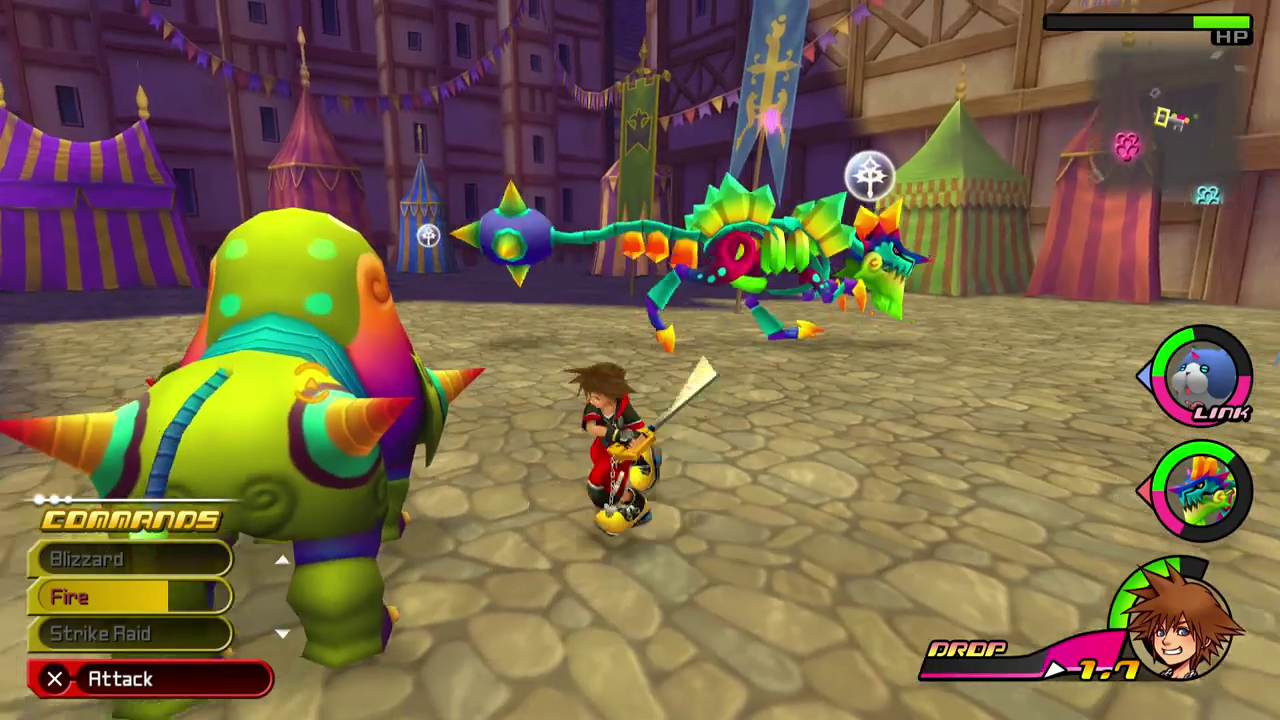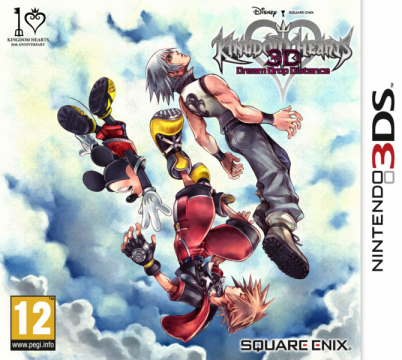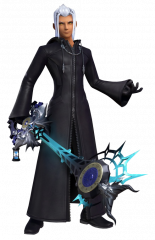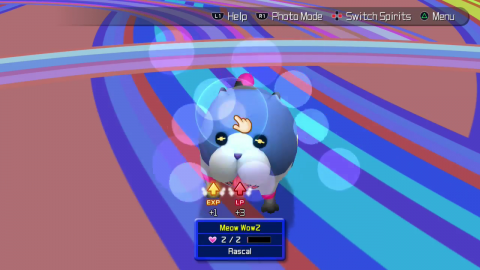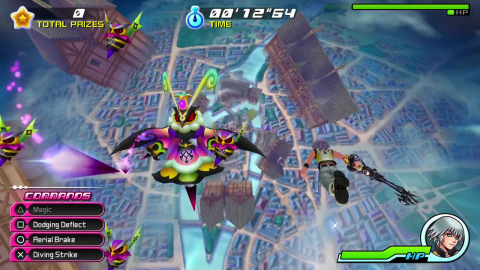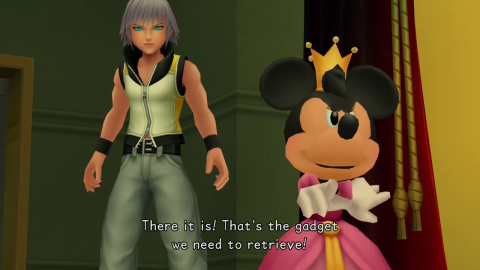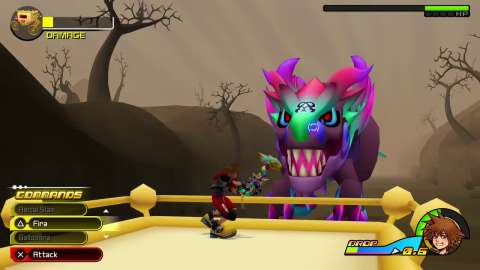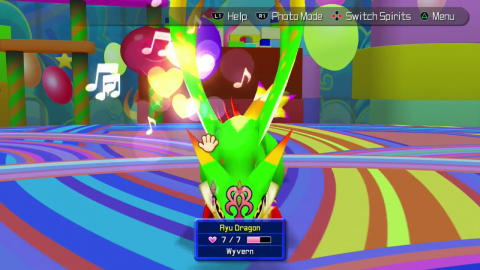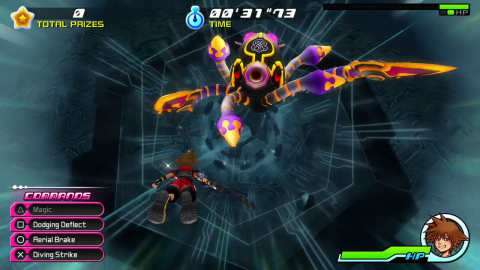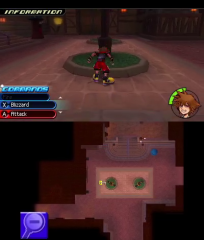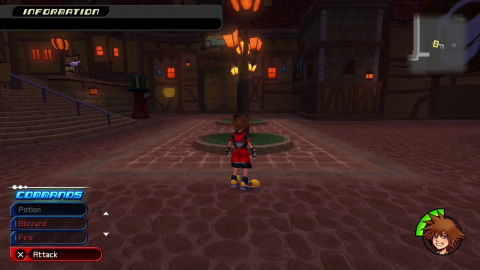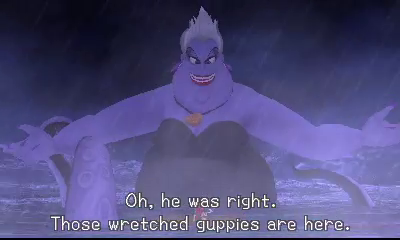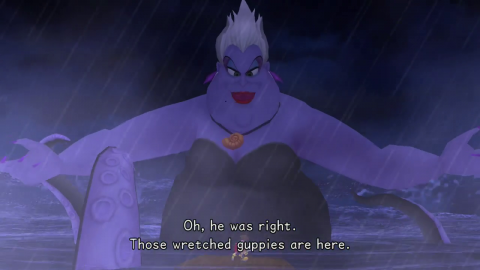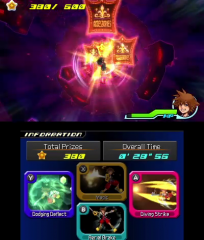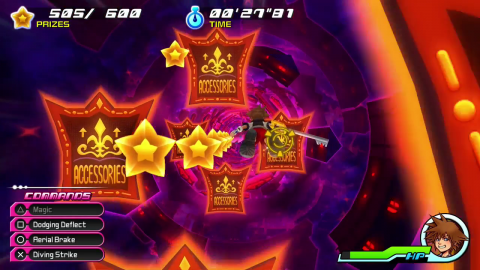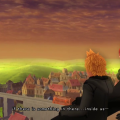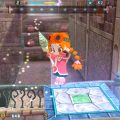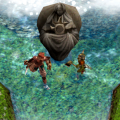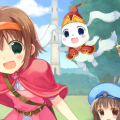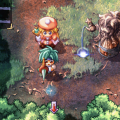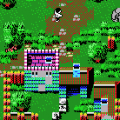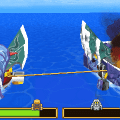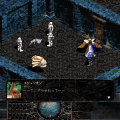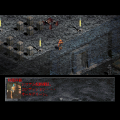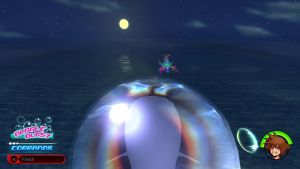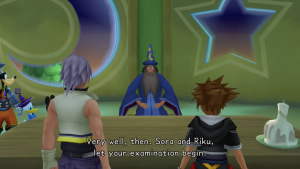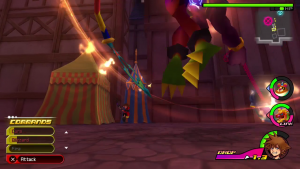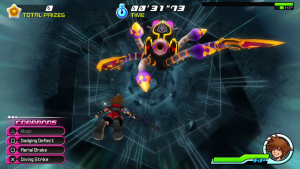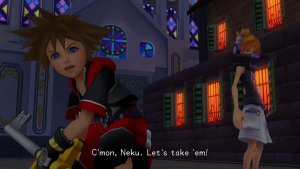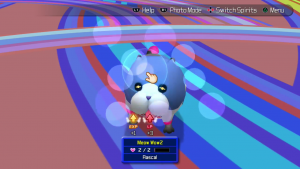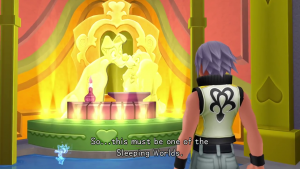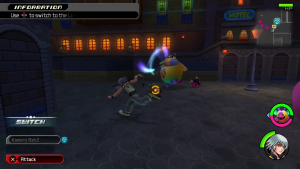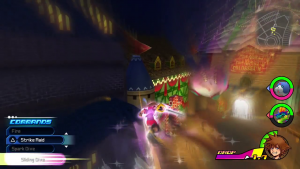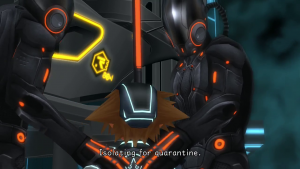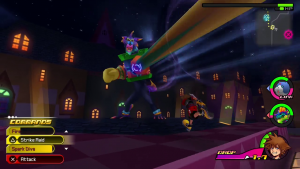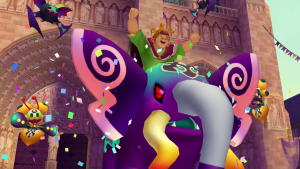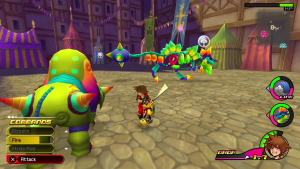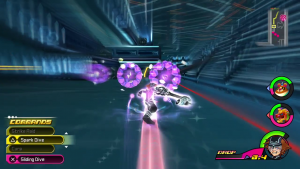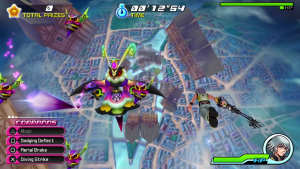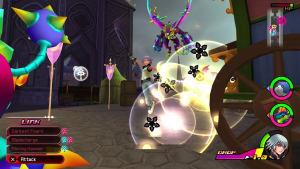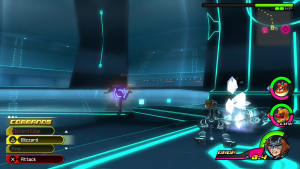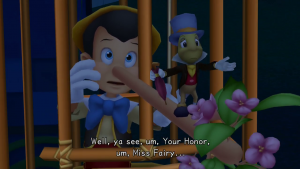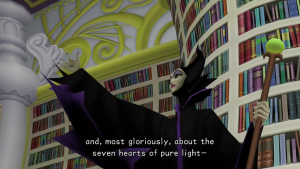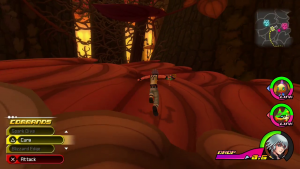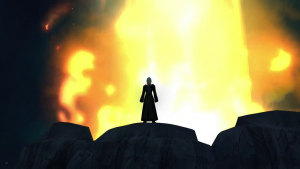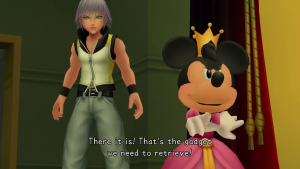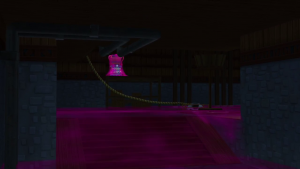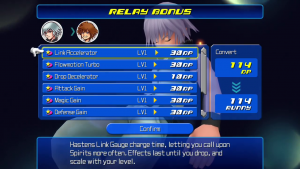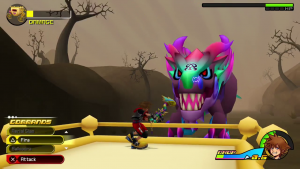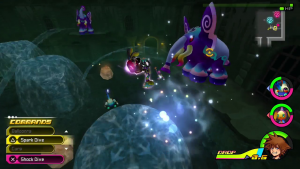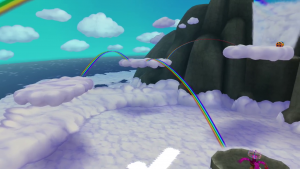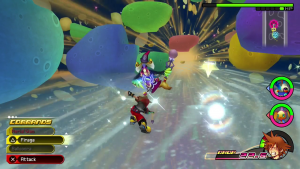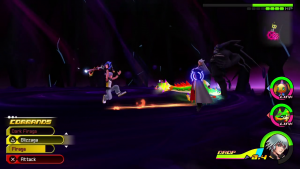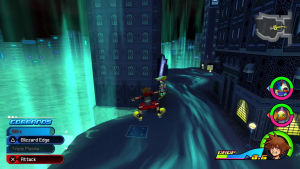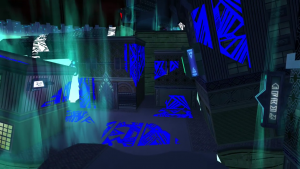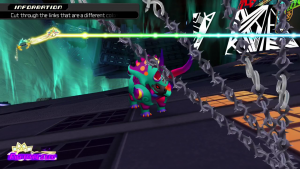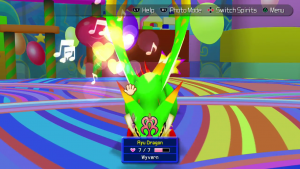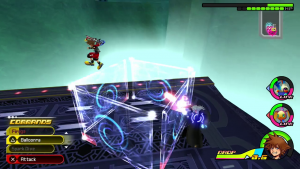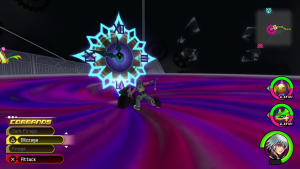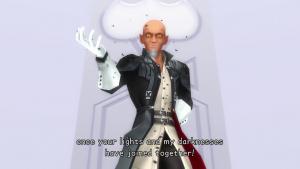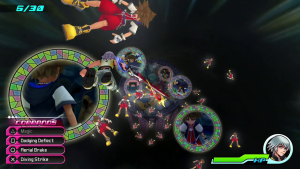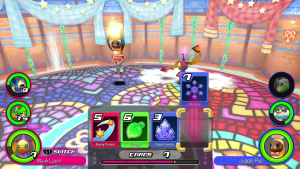- Kingdom Hearts
- Kingdom Hearts: Chain of Memories
- Kingdom Hearts II
- Kingdom Hearts: 358/2 Days
- Kingdom Hearts: Birth By Sleep
- Kingdom Hearts Re:coded
- Kingdom Hearts: Dream Drop Distance
- Kingdom Hearts χ
- Kingdom Hearts 0.2 Birth By Sleep
- Kingdom Hearts III
- Kingdom Hearts: Melody of Memory
- Kingdom Hearts (Miscellaneous)
Kingdom Hearts: Dream Drop Distance (“Kingdom Hearts 3D”) was an early title for the Nintendo 3DS, and was later ported to HD as part of the Kingdom Hearts 2.8 HD Collection. And if you think those titles were bad, just wait until you see the titles of the other games on the collection. This collection skipped the seventh generation consoles and went straight to the eighth.
The story returns us to the present day, where, for reasons that would take too long to explain in a short-form summary, the original Xehanort from Birth by Sleep is back, and Yen Sid, assuming the role as the good guys’ commander-in-chief, sends Sora and Riku to acquire a special power from several “Sleeping Worlds,” trapped in a cycle of past events. The two are separated, only to find themselves in alternate universe versions of the same worlds, and things only get stranger from there. Where Kingdom Hearts coded was just sort of silly in its nonsense, Dream Drop Distance is where the plot really starts to go into the deep end and rocketed the series down the path to the confusing reputation it has today. For example, our character list:
Young Xehanort
The latest fractal of the original Xehanort, here through the confusing magic of time travel. Young Xehanort would go on to serve as the protagonist of Kingdom Hearts: Dark Road, an inquisitive young man whose quest for the truth will push against age-old taboos that were there for very good reasons.
One odd note about Dream Drop Distance is that it’s one of the few 3DS games to make use of the Circle Pad Pro accessory, which gives the system a right thumb stick and additional shoulder buttons. This means it was future-proofed and compatible with the New 3DS and 2DS released years later, which is definitely the better way to play the portable version.
Dream Drop Distance is the third and, to date, final Command Deck game in the series. Here, there’s no Command merging system. Instead Commands are tied into another feature: the Dream Eaters. Dream Eaters come in two strains: the Nightmares that serve as your primary enemies in the Sleeping Worlds, and the Spirits that serve as your allies. Every minor enemy in the game has a Spirit equivalent that can serve as your de facto “Donald and Goofy”. Like in Kingdom Hearts 2, you can only have two at a time but can swap in a third without any additional trouble.
Once summoned, you can bond with your Dream Eaters using a first person patting and playing system blatantly grafted from Nintendogs. This is a little tedious and isn’t even necessary (combat is better at improving their numbers) but the option is there, and things are kind of cute. Various minigame toys and snacks can also help you round off your pets’ affection (which determines the frequency of their attacks), experience, and “Link Points”. By poking and prodding them in specific ways, you can also change their Nature, indicated by the color of their eyes. Natures unlock special attacks and change the frequency of certain attacks in general, and are completely undocumented in the game itself. A guide is almost mandatory.
Unlike traditional allies, Dream Eaters are actually created via synthesis: the game will sell you default recipes, but you can modify them (generally by using stronger versions of the ingredients) to create stronger versions of the creature. Unfortunately, you can’t increase a creature’s “Rank” after it’s been summoned, so, in one of the least Kingdom Hearts-esque moments in the franchise, your only way to improve your playful animal buddies is to melt them back down into their component parts and summon them again! Thankfully, Sora and Riku share their available Dream Eaters and even Commands, with only a few exclusives on either side. You can even have the same Dream Eaters in both parties at the same time!
What makes the Dream Eaters so unusual is their relationship to your abilities. Each Dream Eater has a skill tree that rewards Sora and Riku more than themselves, including new items and Commands, but mostly abilities, all bought via Link Points. Most of the series’ long-standing abilities are attached to the Dream Eaters, and are only around so long as the Dream Eater is in one of your three party slots. Only a few mainstays are permanent, but those are extremely rare, making it harder than ever to find key powers. This only makes guides feel more and more important, less like customization and more like an obstacle.
The game has another infamously frustrating bit. Unlike Birth by Sleep, you don’t select a character and follow their storyline to the end. Instead, each character suffers from a sort of paranormal narcolepsy called the Drop Meter, and when it exhausts, you automatically switch to the other character whether you want to or not. This is irritating, but functionally harmless, unless it happens during a boss battle, the fight restarts when you finally get back! The meter will move faster if you’re hit by certain attacks, especially ones that cause the Sleep status effect.You can Drop manually if you want, but the only way to put off a Drop is to use items called Drop-Me-Nots. And you really should use them! Unfortunately, Kingdom Hearts has never made items all that appealing, and the Command Deck games add their own frustrations to the matter, but the advice stands: the game is much better with Drop-Me-Nots than without!
Once you finally do Drop, you get to spend points called “Droplets” on a special stop, buying buffs for the other character during their next run. In the international version and later, these purchases include a slower, starting Drop rate, which is another must-buy, and goes to show just how maligned the Drop mechanic had become even in the short period between Japanese and international release.
This Drop shop is generally worth the effort to use, and the most common source of Droplets are “Portals” scattered about the game world. Most of these feature brief combat challenges, and a random Special Portal appears once per Drop, per world, will feature an advanced challenge that’s worth extra prizes. The game’s bonus challenge to clear all of these random Special Portals is a real chore, though. You can also find Friend Portals that can give you a temporary, invulnerable force of Spirits. Using the 3DS’ StreetPass, you can also get Portals based on other players’ Dream Eaters.
Dream Drop Distance also offers a new mobility system it calls Flowmotion. Flowmotion attempts to bring all the wild, anime powers of flight to Kingdom Hearts. By kicking off of walls, rails, or the occasional horizontal or vertical bar, you can send Sora or Riku rocketing around the arena and launching special area attacks. Flowmotion will take a little while to get used to, but after some practice you can go anywhere, literally anywhere, especially using multiple wall kicks to climb any wall in the game from bottom to top. This added mobility allowed the level designers to create the largest areas in Kingdom Hearts history, with added verticality that would put any claims of “flat” level design to rest. Unfortunately, it doesn’t seem to know what to do with all those open areas, and any sense of Metroidvania progression is lost when you start the game with the ability to go anywhere. Flowmotion is at its best when the game has prepared sandboxes or obstacle courses for you, and at its worse in big, open areas like The Hunchback of Notre Dame’s empty Paris.
In fact, “emptiness” is something of a running problem with Dream Drop Distance. There are almost no NPCs in these massive areas. This has been a budding problem since Kingdom Hearts 2, but seems so much worse in the massive, and frequently urban or even real-world, areas you end up exploring in Dream Drop Distance. The great, abandoned, data cityscapes of Tron: Legacy! Or the child-free, children’s amusement park from Pinocchio! Rushing to help Paris’ Romani population against the evil Judge Frollo has a lot less impact when you arrive at their extremely-detailed Court of Wonders and try to rescue the one (1) person the developers bothered to render, main character Esmerelda, with no sign of even Clopin from the film. In an effort to give the worlds a little identity, the devs gave each world its own “Reality Shift,” a special attack exclusive to the place that takes the form of a touch screen minigame, but it doesn’t add much.
In the games’ defense, it’s also home to one of the best worlds in series history, one based on Disney’s Fantasia. Classical (public domain) music plays uninterrupted by combat, as every standard sound effect is replaced with the sound of harps and drums. You walk across leaves, your character size of a pixie, and piano plays for every leaf. You dispel storms over the Elysian Fields, glide in a storm a million times your size, and ride along clouds in the sky. Admittedly, the musical Reality Shift you have to play to solve puzzles barely gives you time to get into the rhythm, and there are still no NPCs, but it’s an unforgettable experience all the same.
While Dream Drop Distance generally maintains the Kingdom Hearts standards, one area where it falls behind is minigames. There are the Dream Eater toys, and also Flick Rush, a game where you order your Dream Eaters to fight in the form of cards “flicked” from the bottom screen. Unfortunately, Flick Rush’s strategy is easily broken, ruining all of its intended depth. There’s also no Gummi mode, but there is a minigame called the Dive, where a character “dives” out of space and down to a world, going through obstacles or occasionally Dream Eaters in their path. This made was clearly intended to take advantage of the system’s 3D capabilities, as you fly forward past depth-based obstacles, but it’s short overall and easy to master, so you won’t miss the 3D effect in the remaster.
Like Birth by Sleep, the game ends with a secret, final scene rather than a trailer, and it’s relatively easy to unlock. Anyone looking for bonus challenges can also fight a single superboss from a forgotten Mickey Mouse short. You can also fight powered-up versions of most of the main game bosses, although there’s nothing special about them beyond their boosted stats.
In fact, the entire game has a feeling of rush around it. The problems listed above, plus the almost incomprehensible plot developments, speak to that in general, but the most obvious evidence were the serious bugs in the game on release. The original Japanese version was so bad that it was one of the first 3DS games to receive a patch, even more earthshattering considering Nintendo shoving patches on the backburner during the Wii’s lifetime. Some glitches persisted after that, and they only make the 3DS version less appealing overall.
The 3DS version was also released in a “Mark of Mastery” limited edition containing several 3DS AR cards that could be used to unlock unique Spirits. When the game was remastered, these Spirits were incorporated into the main game.
When the game was finally ported to HD, it saw a number of improvements. Most of the changes in this version concern removing touch screen elements. Nearly all Reality Shifts and Dream Eaters toys have been modified, with one Dream Eater toy minigame outright replaced with a new one. Unfortunately, some minigames decided to make use of the PS4’s touch-pad if you’re using that system, which is just awful.
The biggest and most important change in this version is that it doubled the initial Drop timer to twenty minutes. This gives you loads of time and helps repair the game’s biggest problem. This version also removes all StreetPass features, and also seems to remove the game’s major, remaining glitches, better late than never.
